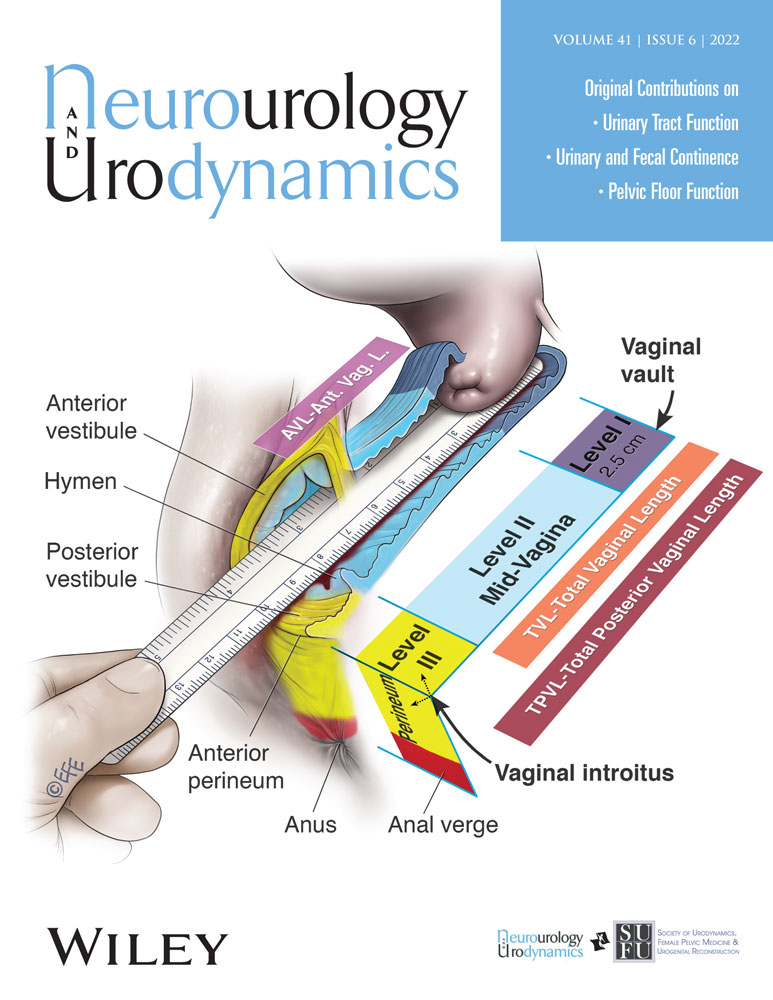Adjustable continence balloons in postprostatectomy incontinence: Outcomes and complications
Abstract
Objective
The objective of this study was to assess the mid-term efficacy and safety of adjustable continence therapy (ProACT™) for the treatment of male stress urinary incontinence (SUI) after radical prostatectomy (RP).
Patients and Methods
Single-center retrospective study including male patients implanted with ProACT™ periurethral balloons for SUI after RP between 2007 and 2017, mainly with flexible cystoscopic guidance. Efficacy was assessed using a composite endpoint with subjective (patient's impression of improvement (PII), using a 0–100 numeral rating scale) and objective outcomes (decrease in daily pad use). Postoperative success was defined as a PII ≥ 80%, associated with the use of 0–1 pad daily. Improvement was defined as a PII ≥ 50% and a decrease ≥50% in the number of daily pads used.
Results
Two hundred men with a median age of 68 (64–73) years were included. Seventeen percent (n = 34) had had prior radiotherapy and 15.5% (n = 31) had had prior SUI surgery. The median follow-up was 43 (19–71) months. The severity of SUI was as follows: mild in 119 (59.5%), moderate in 48 (24%), and severe in 33 patients (16.5%). Severe SUI and a history of prior radiotherapy were associated with a lower success rate (p = 0.033 and p < 0.0001). The overall reoperation rate was 34%, with 5.6% (n = 11) requiring a third implantation. Of the patients, 29.4% (n = 58) required an artificial urinary sphincter to treat SUI. At the last follow up, among the overall population, the success rate was 40.1% and the median PII was 18.3%. For patients in whom the balloons were still in place (n = 132), the cumulative success and improvement rate was 78%, with a median PII of 72%.
Conclusion
The minimally invasive ProACT™ device provides a clear beneficial continence outcome in patients with SUI after radical prostatectomy. Severe SUI or prior radiotherapy were associated with a lower success rate in our study.
CONFLICT OF INTEREST
The authors declare no conflict of interest.
Open Research
DATA AVAILABILITY STATEMENT
The data that support the findings of this study are available from the corresponding author upon reasonable request.




